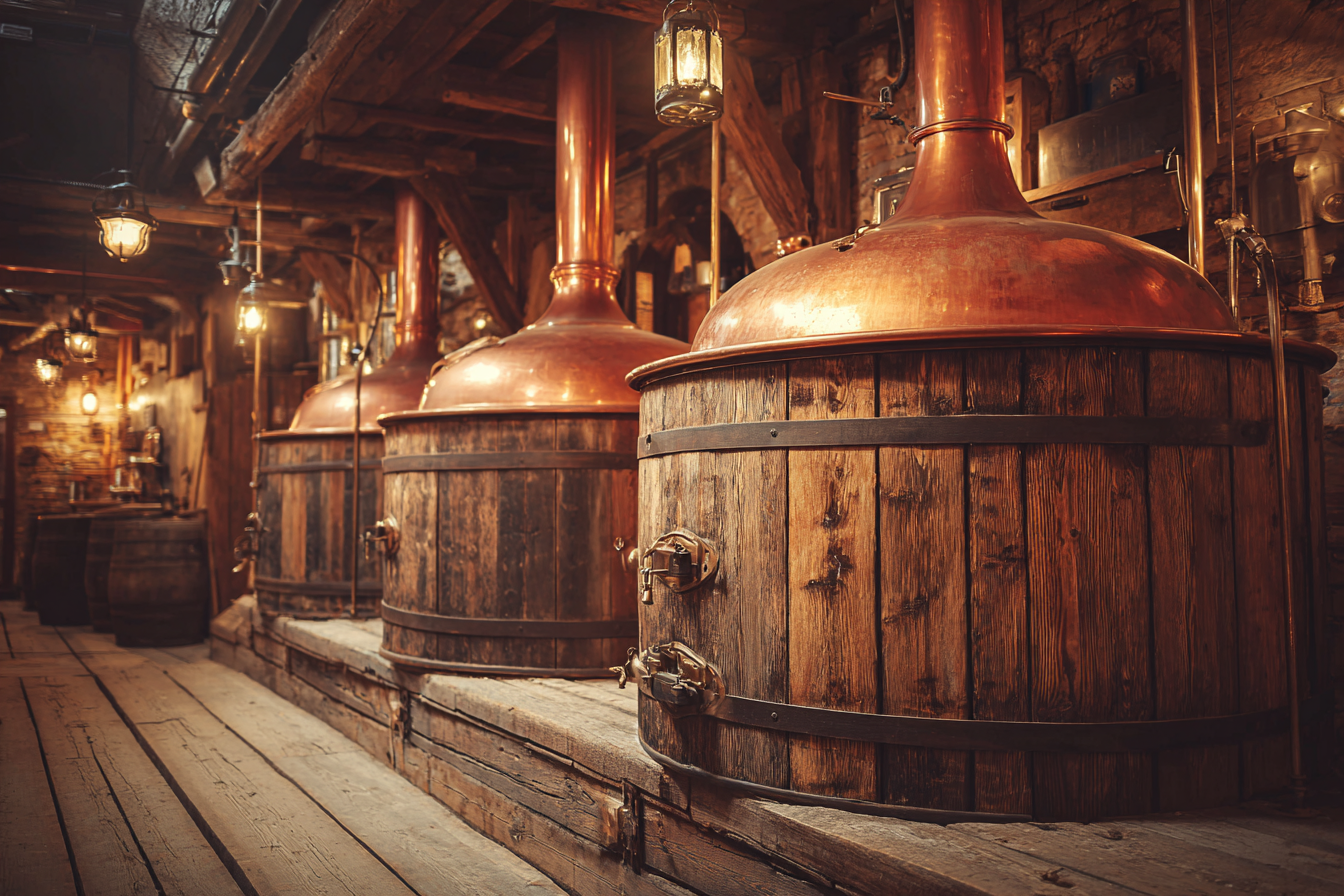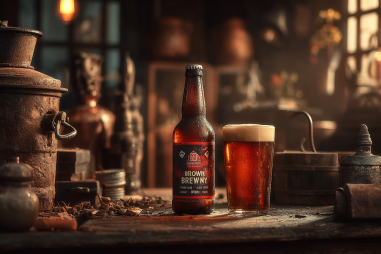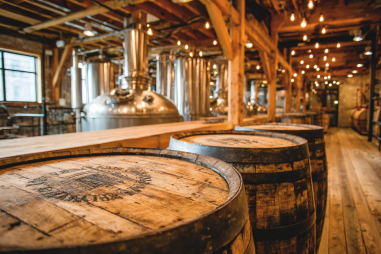There’s something undeniably captivating about Czech Dark Lager—a style of beer that marries rich malt flavors with smooth drinkability, crafting an experience that has enchanted beer lovers for generations. Often overshadowed by the global fame of Czech Pale Lagers like Pilsners, the dark lager holds its own story filled with tradition, innovation, and an enduring legacy. Let’s embark on a journey to uncover the fascinating history behind Czech Dark Lager, exploring how it originated, evolved, and secured its place in both local and international beer culture.
Early Origins of Dark Lager Brewing in the Czech Republic
The roots of Czech Dark Lager reach back to the early days of brewing in the Bohemian region, now part of the Czech Republic. Brewing has been a vital part of Czech culture for centuries, with documented beer production stretching as far back as the 10th century. However, it was during the Middle Ages that lager brewing began to take form. Dark ales and heavier beers initially dominated the scene, slowly giving way to lagers as understanding of fermentation advanced. Dark lagers emerged as a delightful middle ground, boasting darker malt profiles while benefiting from the crispness attributed to lager yeasts.
The use of dark malts—notably roasted barley and caramel malts—added complex flavors ranging from rich caramel and toffee to hints of chocolate, a stark contrast to the lighter lagers more commonly brewed later. This style catered to local tastes, as traditional Czech cuisine paired well with the malt-forward profiles of these beers. Brewing traditions passed down through monasteries and small-scale breweries helped refine these dark lager recipes throughout the centuries.
How Brewing Techniques Shaped the Style
The distinctive character of Czech Dark Lager owes much to the brewing techniques developed and perfected in the region. Czech brewers embraced bottom-fermentation yeasts, which ferment at cooler temperatures and produce cleaner, crisper flavors compared to ale yeasts. This fermentation method introduced greater clarity and less fruity esters, allowing the rich malt flavors to shine.
Another key factor was the use of soft water, especially in areas like Pilsen, which greatly influenced the beer’s mouthfeel and malt expression. Additionally, the traditional decoction mashing process remains a hallmark of Czech brewing—this technique involves boiling a portion of the mash and returning it to the main mash to boost enzymatic activity and enhance malt complexity. This practice imparts a depth and roundness rarely found in other lagers.
Authentic Czech Dark Lagers also feature Saaz hops, prized for their mild bitterness and aromatic qualities, which balance the sweetness of the malts without overpowering them. The result is a harmonious beer that is both robust and refreshing.
Key Historical Breweries and Their Influence
The trajectory of Czech Dark Lager is inseparable from the history of the country’s iconic breweries. Among the most influential was the Velkopopovický Kozel Brewery, founded in 1874, which played a significant role in popularizing dark lagers with their skilled craftsmanship and commitment to quality. Kozel’s Dark Lager, with its deep amber hues and smooth palate, became emblematic of the style’s potential.
Similarly, Budějovický Budvar, established in 1895 in České Budějovice (Budweis), contributed to refining the lager tradition in the region. Though internationally renowned for their pale lagers, they also crafted early versions of darker brews that kept the regional style alive.
Smaller, family-run breweries dotted across Bohemia and Moravia nurtured dark lager recipes within local communities, preserving the tradition throughout periods of political and social change. These breweries maintained artisanal brewing methods that influenced larger producers and kept the style relevant throughout the decades.
Evolution Through the 20th Century
The 20th century saw profound shifts in Czech society, politics, and economy, all of which left their mark on the brewing landscape and the evolution of Czech Dark Lager. During the Austro-Hungarian Empire era, Czech breweries flourished, exporting their beers across Europe and developing a reputation for quality.
However, the upheavals of World War I and II impacted production and ingredient availability. In the interwar period, Czech Dark Lagers were adaptations to changing tastes and market demands, sometimes lighter or sweeter depending on economic conditions.
After World War II, under Communist rule, many breweries were nationalized. Production emphasized quantity over quality in some cases, which led to a decline in traditional brewing practices. Despite challenges, Czech Dark Lager survived, often driven by regional pride and homebrewing traditions that kept the recipes alive.
The Velvet Revolution of 1989 and subsequent market liberalization revitalized the Czech beer industry. Breweries began investing in quality, revisiting original recipes, and embracing traditional techniques once again. Craft beer movements further fueled innovation and respect for classic styles like Czech Dark Lager.
Czech Dark Lager in Global Beer Culture
While Czech Pale Lagers, particularly the Pilsner style, are often the Czech beers most recognized globally, Czech Dark Lager has steadily gained international appreciation among craft beer enthusiasts and connoisseurs. Its balanced malt profile appeals to drinkers seeking something richer but still approachable, and it perfectly showcases the nuanced use of malt in lager brewing.
Exported bottles and kegs have introduced beer lovers worldwide to the unique qualities of Czech Dark Lager. Craft brewers outside the Czech Republic have also drawn inspiration from the style, incorporating traditional methods and malt profiles into their own interpretations.
Moreover, beer festivals and tasting clubs dedicated to heritage styles have elevated Czech Dark Lager as a must-try for anyone interested in the history and diversity of lager beer. Its role as a bridge between the heavy, robust ales and crisp, pale lagers makes it an excellent ambassador for Czech brewing culture.
Embracing the Historical Significance of Czech Dark Lager
Czech Dark Lager is far more than just a beer style; it represents centuries of brewing tradition, cultural identity, and craftsmanship. From its early roots in medieval Bohemia to its resurgence in the modern craft beer scene, it serves as a liquid history lesson for those willing to savor its layered malt complexities and smooth finish.
Whether enjoyed in a traditional Czech pub or brewed in a contemporary craft brewery, Czech Dark Lager invites us to appreciate the blending of heritage and innovation. It stands as a testament to the enduring value of time-honored brewing techniques and the passion of the brewers who have kept this style alive through the ages.
Next time you pour yourself a glass of Czech Dark Lager, take a moment to reflect on the rich story behind its bold color and inviting flavors—and raise a toast to one of Bohemia’s most treasured beer legacies.







